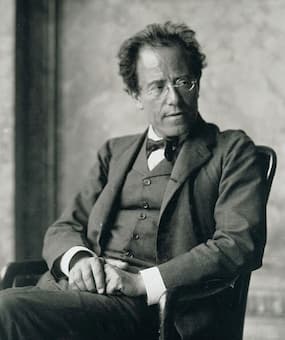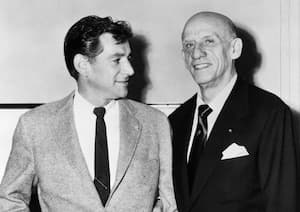
Nähr: Gustav Mahler (1907)
Mahler’s Sixth Symphony, nicknamed, though not by him, Tragic, was actually written at a happy time for Mahler. He completed it in 1903 after having married the 21-year-old Alma Schindler in 1902, and while he was composing the work, his daughter Maria Anna was born.
Mahler wrote his music during his summer vacations, which the family spent in a villa he’d built at Maiernigg on the Wörthersee. Having built the house, he built a garden chalet for his composing room, where he could work in solitude (mostly). According to Alma Mahler, he built the family into the symphony, with Alma represented by the 2nd theme in the first movement and his two children’s rhythmic games on the seashore for the Scherzo movement. The timeline is probably not correct since the couple’s second child wasn’t born until 1904, after the symphony was finished, and the first child, Maria, was less than a year old, but we’ll give some leeway for artistic imagination.

Alma Mahler and her two daughters: Maria (L) and Anna (R)
The order of the movements has changed over the years with the middle two movements originally being in the opposite order. In the first edition of the score in 1906, the Scherzo was the second movement and the Andante the third. In the second and third editions and at its premiere, the Scherzo was moved to be the third movement and the Andante was the second movement. In this recording, the Scherzo follows the order of the first edition and is the second movement.
The Scherzo movement takes its march-like opening from the rhythms of the first movement, but in triple time, rather than in four. In the trio section, marked Altväterisch (‘old-fashioned’), the time signature changes each measure from 3/8 to 4/8 to ¾ and it is the trio section that ‘represented the arrhythmic games of the two little children, tottering in zigzags over the sand.’

Leonard Bernstein and Dimitri Mitropoulos
This radio concert was broadcast on 22 September 1957 from Vienna, with Dimitri Mitropoulos (1896-1960) leading the Vienna Philharmonic. Dimitri Mitropoulos was another of the late nineteenth-century wunderkind: he created at-home musical gatherings from the age of 11-14, demonstrating his abilities at a young age. He studied at the Athens Conservatory, and then in Brussels and Berlin. In 1930, conducting the Berlin Philharmonic in a concert of Prokofiev’s Piano Concerto No.3, when he found that the soloist was ill, he took over the solo part himself and conducted the orchestra from the keyboard. He was principal conductor of the Minneapolis Symphony Orchestra (later called the Minnesota Orchestra) from 1937-1949 before going to New York. He was first co-conductor with Leopold Stokowski and then music director from 1951. At the New York Philharmonic, he was a particular champion of the works of Mahler, a tradition continued by his successor and protégé, Leonard Bernstein. Mitropoulos died of heart failure at age 64 while rehearsing Mahler’s 3rd Symphony in Milan, Italy.

Performed by
Vienna Philharmonic
Dimitri Mitropoulos
Recorded in 1957
Official Website
For more of the best in classical music, sign up to our E-Newsletter
